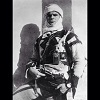0


















| Thumbs Up |
| Received: 5,566 Given: 4,506 |



| Thumbs Up |
| Received: 40 Given: 14 |
















| Thumbs Up |
| Received: 5,566 Given: 4,506 |

Really?
https://en.wikipedia.org/wiki/Pyrrhichios
Pyrrhic dancers
The Pyrrhichios dance ("Pyrrhic dance"; Ancient Greek: πυρρίχιος or πυρρίχη,[1] but often misspelled as πυρρίχειος or πυρήχειος) was the best known war dance of the Greeks. It was probably of Dorian origin and practiced at first solely as a training for war.
Overview[edit]
Plato (Leges, 815a) describes it as imitating by quick movements the ways in which blows and darts are to be avoided and also the modes in which an enemy is to be attacked. It was dance to the sound of the aulos; its time was quick and light, as is also shewn by the metric foot called pyrrhic.[2]
It was described by Xenophon in his work the Anabasis. In that work he writes that at a festival was held in Trapezus to celebrate the arrival of his troops in the city. The following is the part in which the pyrrhic dance is mentioned:
A Mysian who saw that they were amazed, retorted by persuading one of the Arcadians who had acquired a dancing girl to dress her in the finest costume he could, fit her with a light shield and bring her on to give a graceful performance of the 'Pyrrhic' dance. Thereupon there was a roar of applause, and the Paphlagonians asked if the Greek women also fought side by side with their men. The Greeks answered that these were the very women who had routed the king from his camp.[citation needed]Homer refers to the Pyrrichios and describes how Achilles danced it around the burning funeral of Patroclus.
The dance was loved in all of Greece and especially the Spartans considered it a kind of light war training and so they taught the dance to their children while still young.



| Thumbs Up |
| Received: 40 Given: 14 |

I don't want to get into a flame war with you, as that will lead to me telling you what fake identity Greece is and you resorting to fanatical statements about Albanians. This dance is found in all Albanians from North into Kosova to Cameria, as well as in some pockets of Arvanites in Greece and whereever Albanians went. It is not found in Krete, Pontians, Anatolians, or what not. Seems that it is also found in some areas of Greek Macedonia. Question now is, was it brought by Albanian there as well, or is it a native dance of the region. Judging by the fustanellas they are all wearing on their videos, I would assume that it is brought there with Albanians. However, this is judgemental, and we can agree to disagree.



| Thumbs Up |
| Received: 7 Given: 35 |

cool













| Thumbs Up |
| Received: 1,998 Given: 1,604 |













| Thumbs Up |
| Received: 1,998 Given: 1,604 |

Interesting to know.
Also there is a tradition here that during the village's fair there is a sacrifice made(slaughtering of a calf) and this is called Kurban.
The village's fair happens usually during some saints day.
So there are pagan and Christian traditions mixed in this.
Very much the same as Rusalia.













| Thumbs Up |
| Received: 1,998 Given: 1,604 |















| Thumbs Up |
| Received: 3,544 Given: 3,463 |

Almost every Albanian region has their sword dance, or shall I say had because some have been forgotten. Here are few interpretations:



| Thumbs Up |
| Received: 40 Given: 14 |

That is interesting. Animal sacrifice is definitely a pagan tradition, but a a tradition for all pagans. I don't think it is specific to any given area or an absolute sign of a ancient tradition of ancient Macedonia or Macedonians, as I'm sure they had animal sacrifice, as did Turks, Sllavs, Bullgars, and everyone that passed through the Balkans. I believe the symbolism within the rituals is more telling of an older tradition than the sacrificial rituals themselves.
In Diber for example, the goat has an elevated status in sacrificial rituals of these sorts. It is in facts on the Helmet of Skenderbeu(Gjergj Kastrioti). Not only this but it is often used in sacrifice in "important" events. In Golloborde region for example, its blood is sprayed on foundations of buildings and structures as a strengthening bond, with the head on North East foundation? I believe. This is a hardcore pagan ritual which continues to this day. I've been witness to it and it is gruesome to watch. It is also done in weddings and special events. A lamb is substituted sometimes for the goat.
Although I do believe these rituals to be paleo-Balkanic it is hard to disseminate which pagan ritual is native and which is not, since everyone had these rituals. However, given that in Gevgelia it is performed on a holiday, you would have to figure out if that was also a special holiday event in ancient times in Ancient Macedonia. Or at least find some kind of link to it within the ritual. It is kind of complicating to assume anything through pagan sacrificial rituals. The Sword dance is definitely Paleo-Balkanic and it would have 100% been present in ancient Macedonians.

There are currently 1 users browsing this thread. (0 members and 1 guests)
 Северна Македонија
Северна Македонија
Bookmarks